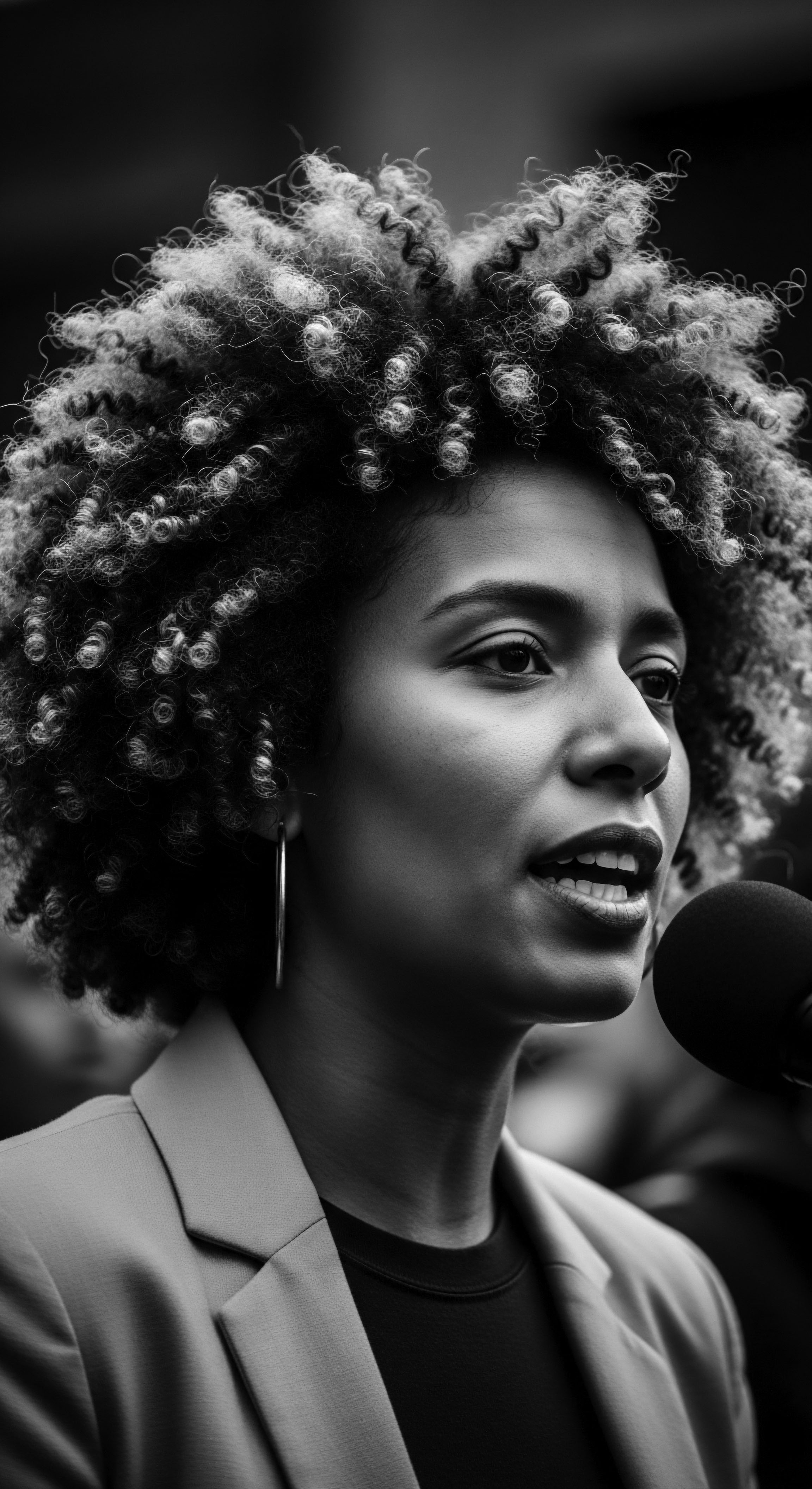
Fundamentals
The spirit of hair, particularly textured hair, holds echoes of ancestral wisdom, a deep-seated knowing that stretches across epochs. When we speak of the Sun Defense Coils, we are not merely discussing a physical aspect of hair; we are engaging with a profound understanding of its protective capabilities, a recognition passed down through generations. This term refers to the inherent structural properties of highly coiled, textured hair—most commonly found within Black and mixed-race communities—that offer natural shielding against environmental stressors, particularly solar radiation. This physical defense is a testament to the hair’s ancestral adaptation, a design sculpted by millennia of interaction with the earth’s climate.
The concept of Sun Defense Coils recognizes that the natural helical arrangement of these strands, with their tight, dense curl patterns, inherently creates a form of natural canopy. This dense configuration provides a physical barrier, lessening the direct exposure of the scalp and individual hair shafts to the sun’s potent rays. It represents a protective heritage, a natural shield.
Ancient peoples, observing the ways their hair responded to the sun, cultivated practices that augmented this natural defense. They understood that their hair was not only an adornment but also a living shield, capable of preserving well-being.

The Inherent Protective Nature of Coiled Hair
Imagine the canopy of a forest, where dense leaves intertwine to filter light before it reaches the forest floor. Similarly, the unique morphology of highly textured hair acts as a natural interceptor of solar energy. Each individual coil stacks and interlocks with its neighbors, forming a network that reduces the direct path of sunlight to the scalp.
This architectural marvel is a biological adaptation, speaking volumes about the ancestral environments in which such hair types evolved. It offers a subtle but persistent shelter, a built-in resilience.
The natural curl patterns of textured hair form an intrinsic protective shield, a testament to ancient biological adaptations for environmental defense.

Understanding the Physical Configuration
- Density and Overlap ❉ The natural inclination of coiled strands to compact and overlap creates a physical mass. This mass means less direct light penetration to the skin beneath. This density is a distinct characteristic, providing a notable layer of protection.
- Scattering of Light ❉ The curved surfaces of each coil cause incoming light to scatter and deflect. Instead of penetrating directly, light disperses across the hair’s surface, diminishing the intensity of radiation reaching the scalp and hair shaft. This dispersion is a vital aspect of its sun defense.
- Natural Melanin Content ❉ Beyond structure, the inherent melanin in many textured hair types contributes significantly to solar protection. Melanin acts as a natural absorber of ultraviolet (UV) radiation, converting it into heat and thereby neutralizing its harmful effects. This pigment works in concert with the physical shape to provide a layered defense.
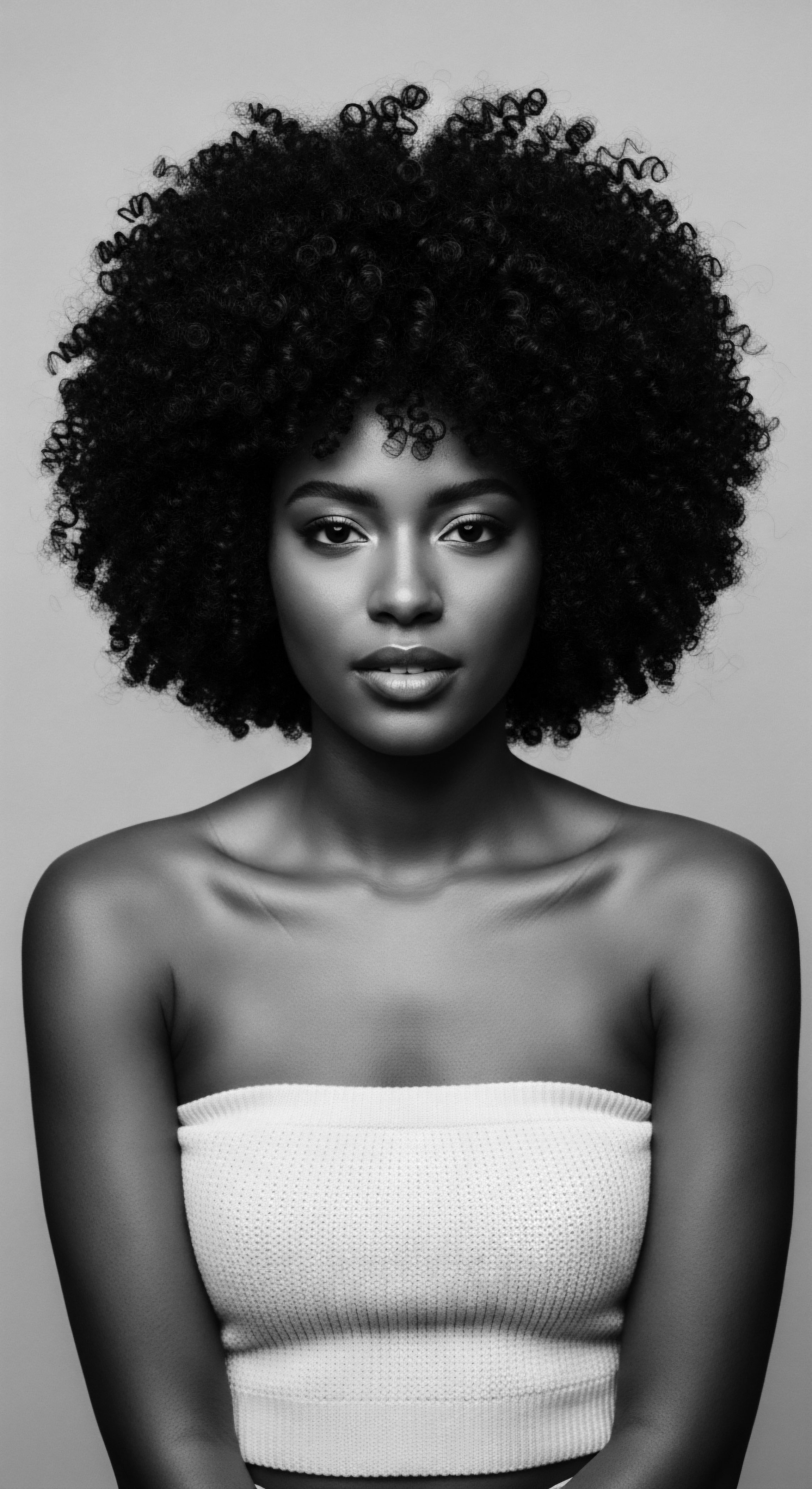
Early Recognition of Hair’s Protective Abilities
From the dawn of human existence, our ancestors lived in intimate conversation with the natural world, discerning its rhythms and lessons. They observed how hair responded to elements like sun, wind, and dust. This deep observation led to traditional hair care practices that were not merely aesthetic but deeply pragmatic.
Early communities recognized the specific needs of textured hair in arid or intensely sunny environments, realizing that certain styling methods enhanced hair’s natural capabilities for defense. This observation became the foundation for generations of hair wisdom.
The meaning of hair extended beyond simple appearance; it held a role in survival and comfort. This knowledge, passed through oral histories and communal rituals, laid the groundwork for sophisticated care routines. These practices, while appearing simple on the surface, reflected a profound understanding of hair’s biological functions and its capacity to act as a barrier against environmental adversities.
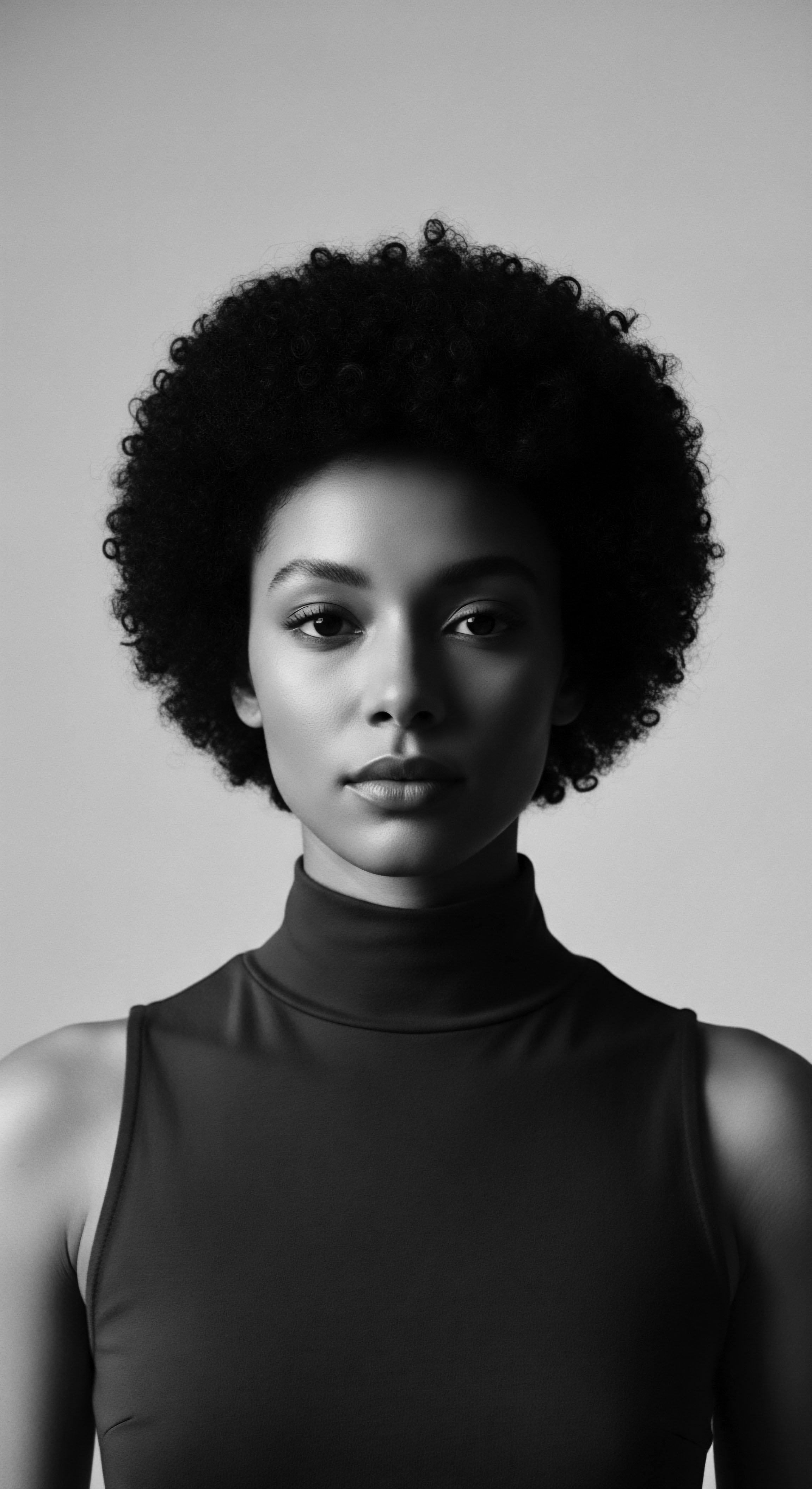
Intermediate
Moving beyond elementary understandings, the concept of Sun Defense Coils encompasses not only the hair’s inherent protective architecture but also the ingenious methods employed by ancestral communities to amplify this natural shielding. This deeper interpretation recognizes hair as a living archive, holding the collective knowledge of generations who learned to thrive amidst diverse climates. The significance of Sun Defense Coils expands to include the active practices that rendered hair a formidable barrier against the sun’s relentless embrace, transforming biological predisposition into cultural mastery.
The ancestral experience of textured hair, especially within Black and mixed-race communities, provides a rich historical testament to this understanding. Communities across the African continent and its diaspora developed hair care regimens that served dual purposes ❉ aesthetic expression and physical preservation. These practices demonstrate a sophisticated, intuitive grasp of dermatological and trichological principles, long before formal scientific nomenclature existed.
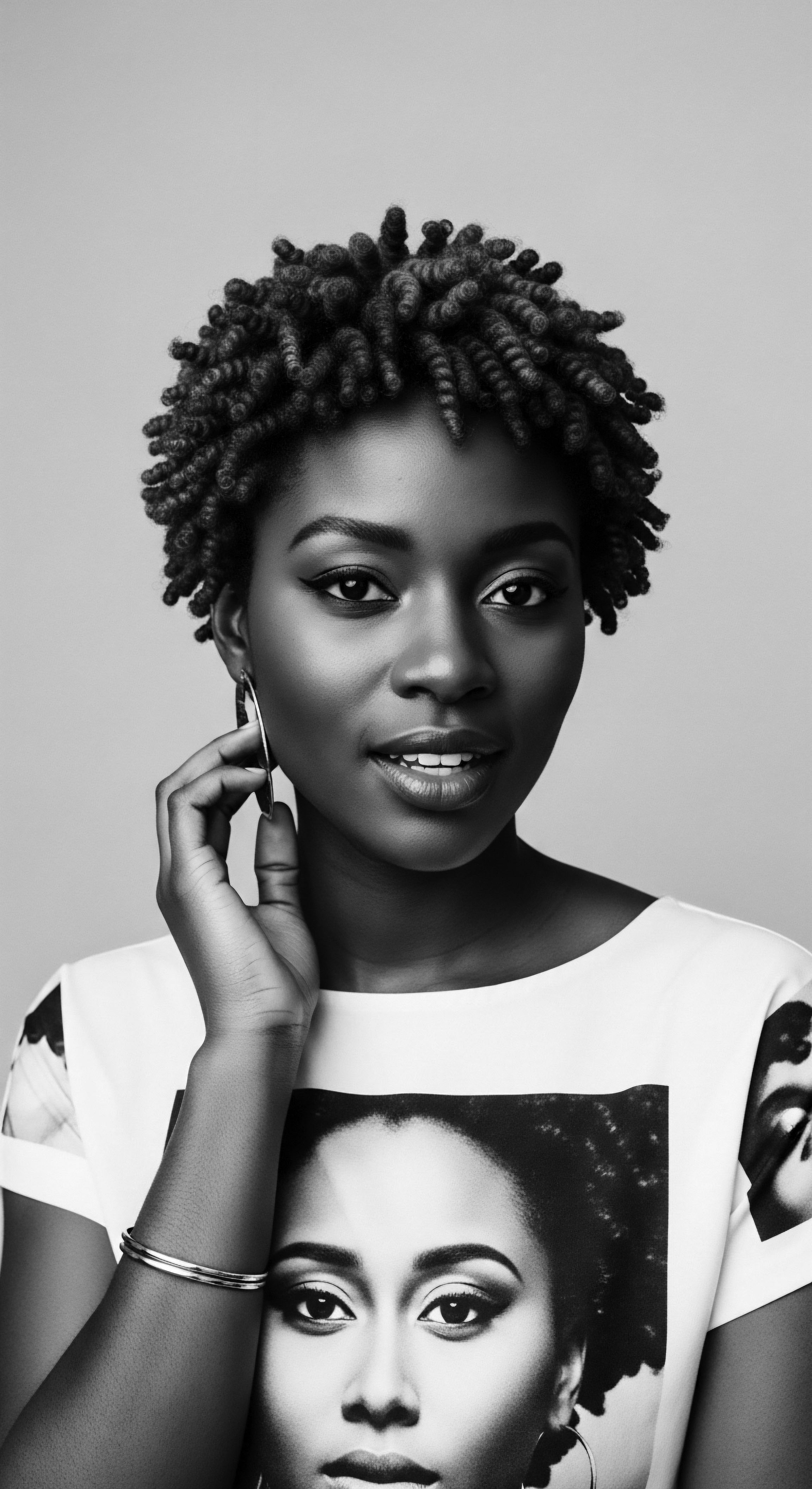
Ancestral Styling as Augmented Protection
The creative spirit of early hair artistry often found its roots in functionality. Protective hairstyles, frequently seen in traditional African societies, were not solely for adornment or social signaling; they were also ingenious solutions to environmental challenges. Braids, twists, and locs, when crafted with intention, would draw hair together, compressing the natural coils into a more substantial mass.
This increased density further minimized the scalp’s exposure to direct solar rays and protected the length of the hair from drying winds and dust. The styles themselves became living extensions of the hair’s natural protective ability.
Ancient styling practices, like intricate braiding and coiling, were not merely decorative but deliberate amplifications of textured hair’s intrinsic sun-protective qualities.

Examples of Traditional Protective Hairstyles
- Cornrows ❉ These braids lie flat against the scalp, creating patterns that cover significant portions of the scalp, providing a physical barrier against direct sunlight. Their tightly woven structure holds strands securely, reducing environmental exposure.
- Bantu Knots ❉ Small, coiled knots that, when formed, create compact bundles of hair. These knots keep hair ends tucked away and protected from the elements, reducing dehydration and breakage. They also present a dense surface to the sun.
- Locs ❉ Over time, locs develop into dense, matted cylinders of hair. This formation creates an exceptionally thick and opaque barrier, offering substantial protection to both the scalp and the hair shaft from solar radiation.

The Role of Traditional Ingredients in Enhancing Sun Defense
Beyond styling, ancestral wisdom recognized the profound influence of natural substances in bolstering hair’s resilience. The earth provided remedies, and communities learned to discern which botanicals, clays, and emollients held properties beneficial for hair exposed to intense sun. These ingredients were often applied as pastes, oils, or rinses, creating an additional layer of defense. They worked in concert with the hair’s natural coils, adding moisture, strengthening strands, and reflecting light.
| Ingredient Shea Butter |
| Source/Community West Africa (e.g. Ghana, Nigeria) |
| Protective Action (Connecting to Sun Defense Coils) Forms a nourishing barrier against environmental conditions, including sun. Its rich texture helps to seal moisture within coiled strands, preserving their integrity. |
| Ingredient Red Ochre (Otjize) |
| Source/Community Himba People (Namibia) |
| Protective Action (Connecting to Sun Defense Coils) Mixed with butterfat, this paste provides physical protection against solar radiation and dryness. It adheres to coils, creating an opaque, reflective layer. |
| Ingredient Coconut Oil |
| Source/Community Various African and Asian cultures |
| Protective Action (Connecting to Sun Defense Coils) Penetrates the hair shaft, reducing protein loss and offering a degree of UV filtration. It helps maintain the suppleness of coils, preventing brittleness from sun exposure. |
| Ingredient Marula Oil |
| Source/Community Southern Africa (e.g. Himba) |
| Protective Action (Connecting to Sun Defense Coils) Rich in antioxidants and fatty acids, it shields hair from oxidative damage caused by UV rays. It conditions hair, assisting coiled textures in maintaining their natural protective density. |
| Ingredient These ancestral practices highlight a deep connection between natural hair, land, and survival, using earth's provisions to honor and shield the hair. |
The deliberate application of these substances reveals a nuanced understanding of hair biology and environmental factors. This was not random experimentation but a systematic compilation of generational experiences, identifying what worked best to maintain hair’s health and protective capabilities under the sun. The collective memory of communities holds these precise formulations and their application techniques.

Academic
The academic elucidation of Sun Defense Coils demands a synthesis of biological trichology, cultural anthropology, and historical sociology. It stands for the sophisticated biophysical properties of coiled hair fibers that inherently mitigate solar radiation effects, concurrently recognizing the enduring cultural practices that have historically augmented these natural protective mechanisms within Black and mixed-race communities globally. This comprehensive explanation moves beyond superficial appearances, plumbing the depths of hair’s structural integrity, its melanin composition, and the intricate ways ancestral ingenuity has interpreted and capitalized on these attributes for survival and well-being.
The core meaning of Sun Defense Coils, from an academic vantage point, rests upon the understanding that textured hair, especially afro-textured hair, represents a remarkable evolutionary adaptation. Its distinct helical morphology, ranging from waves to tight spirals, provides a physiological shield against the sun’s intense ultraviolet (UV) radiation. This is a concept rooted in the origins of human life, where early hominids in regions of high solar exposure developed hair characteristics that served as a direct form of environmental protection. The significance here is not merely cosmetic; it speaks to the fundamental biological capacity of coiled hair to contribute to human resilience in harsh climates.
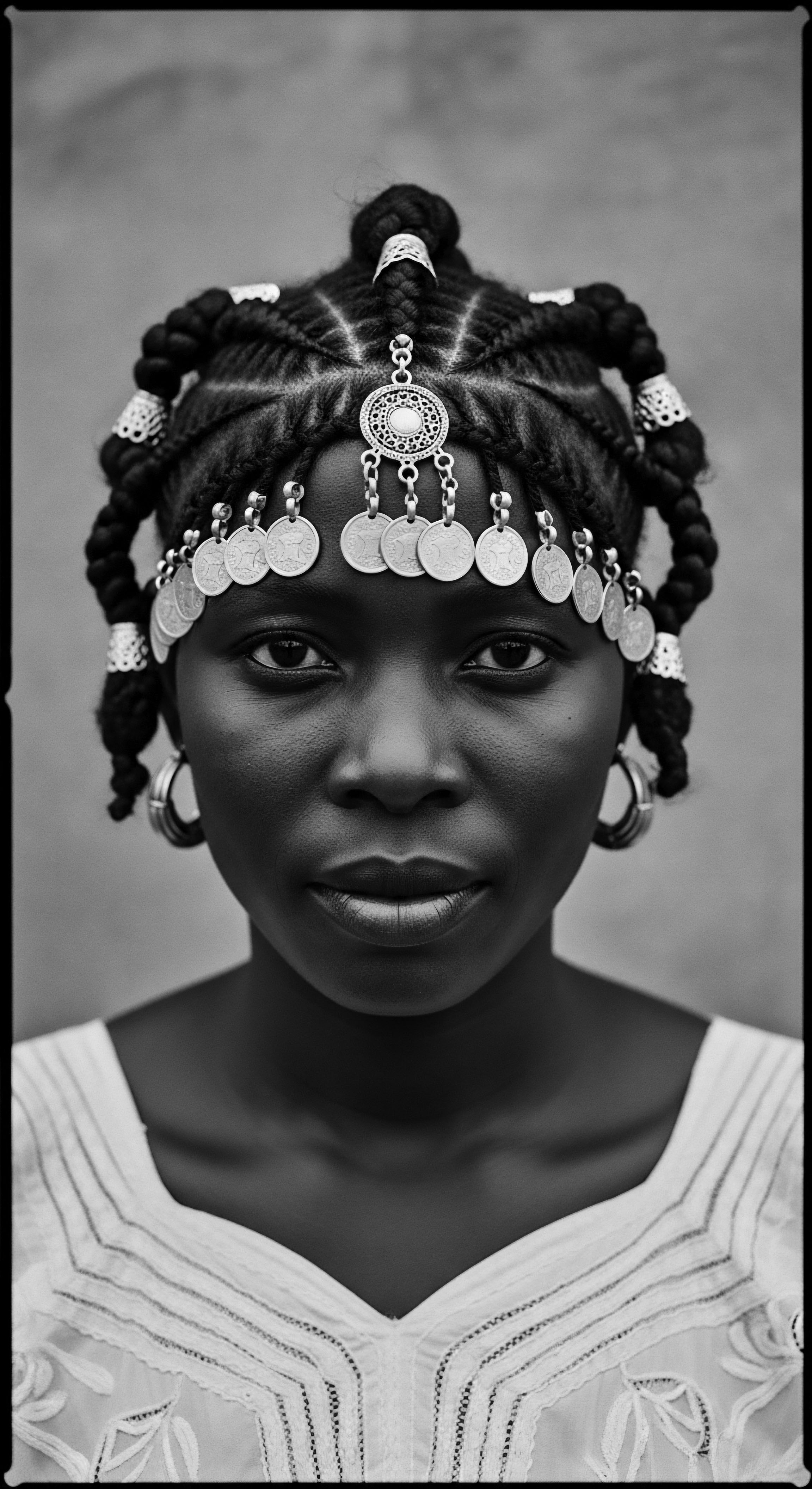
Biophysical Mechanisms of Hair Photoprotection
At a microscopic scale, the distinct properties of coiled hair contribute to its effectiveness as a solar barrier. Two primary biophysical elements interact to achieve this photoprotection ❉ the physical structure of the hair shaft and the melanin present within the hair.

The Structural Contribution
The helical shape of textured hair, characterized by its elliptical or irregular cross-section and varying degrees of curl, plays a crucial role in its ability to manage light. Unlike straight hair, which generally presents a smoother, more uniform surface, coiled hair creates a complex arrangement of individual strands. This complexity results in ❉
- Increased Light Scattering and Absorption ❉ The irregular surfaces and tightly packed nature of coils increase the scattering of incoming light. Instead of light directly striking the scalp, it encounters multiple hair surfaces. Each interaction causes light to reflect, refract, or scatter in various directions, diffusing its intensity before it reaches the scalp. This phenomenon means a considerable portion of UV radiation does not penetrate to the vulnerable skin beneath the hair.
- Denser Canopy Formation ❉ When textured hair is in its natural, unmanipulated state, or when styled in traditional protective modes, the coils stack and compress. This creates a denser, more opaque layer of hair. This dense mass forms a physical barrier, effectively reducing the surface area of the scalp exposed to direct solar radiation. The physical density acts as a living roof, providing shade.
A study by Markiewicz and Idowu (2024) indicated that “textured hair was more sensitive to UVR-induced changes than straight hair, with the primary molecular targets represented by chemical groups in keratins.” This initial finding, while seeming contradictory, underscores the need for active sun protection for textured hair due to its greater susceptibility to damage, even with its inherent protective qualities. The sensitivity points to the delicate balance between inherent structure and the need for external care, a balance understood by ancestral practitioners.

The Melanin Contribution
Beyond structure, the inherent presence of melanin, particularly eumelanin, in darker textured hair types is a fundamental component of its solar defense. Melanin is a complex pigment responsible for hair color, but it serves a primary biological function as a natural photoprotectant.
- UV Absorption ❉ Melanin molecules absorb UV radiation, effectively converting harmful light energy into harmless heat. This absorption prevents the UV rays from causing damage to the keratin proteins within the hair shaft and to the cells of the scalp. Darker hair, with higher concentrations of melanin, typically displays superior UV absorption capabilities.
- Antioxidant Properties ❉ Melanin also possesses antioxidant properties, which help neutralize free radicals generated by UV exposure. These free radicals can cause oxidative stress and damage to hair proteins and lipids, leading to hair degradation. The pigment acts as an internal guardian.
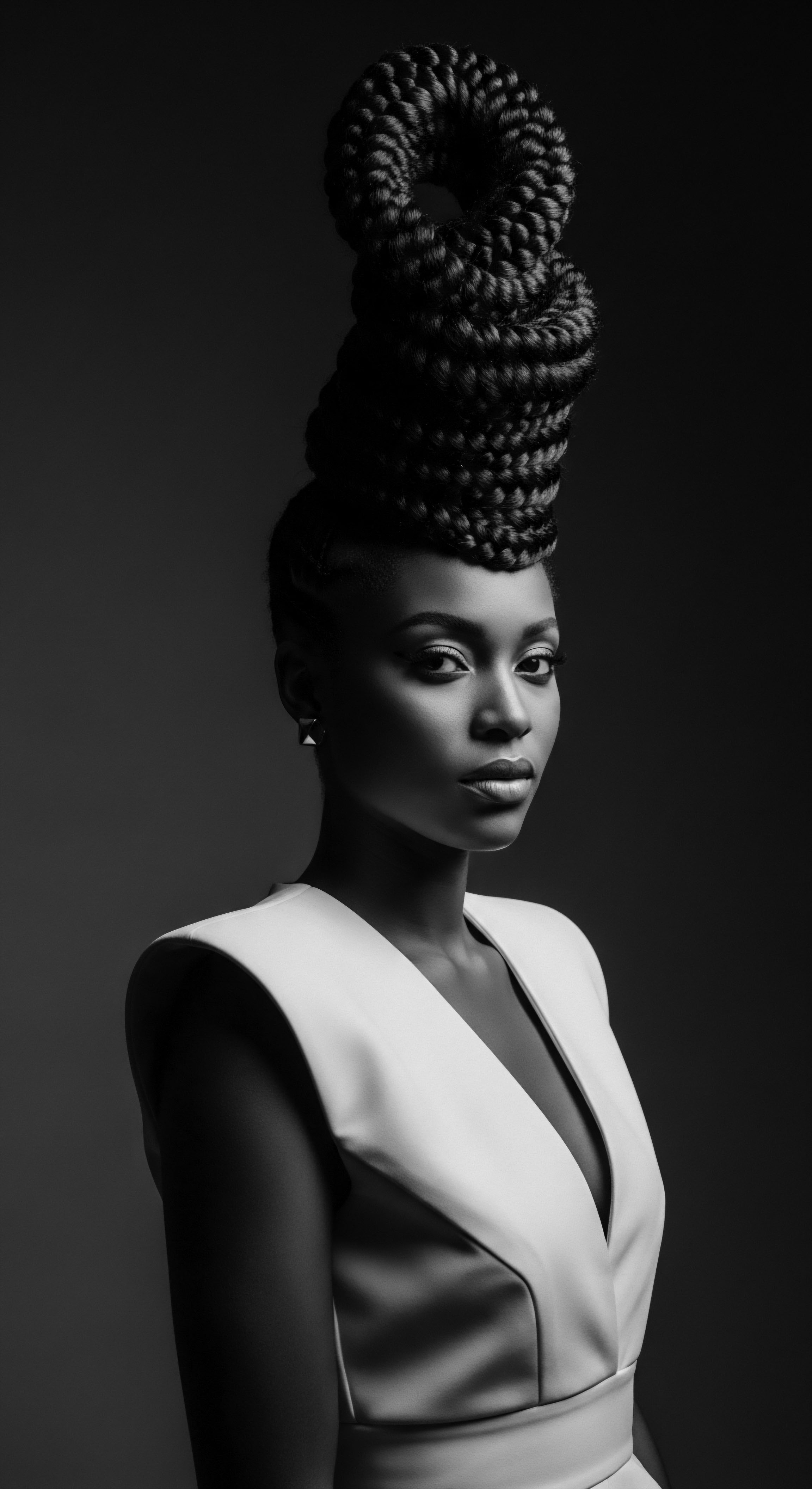
Ancestral Practicality ❉ A Case Study of the Himba People’s Otjize
The academic lens, while appreciating the biophysical, must also acknowledge the profound cultural wisdom that complemented these natural defenses. The Sun Defense Coils, in their purest sense, were not simply a passive biological feature; they were actively recognized and enhanced through ancestral care practices. A compelling example arises from the practices of the Himba People of Namibia. Their age-old use of “otjize”—a paste composed of red ochre mixed with butterfat and often aromatic resins—serves as a powerful illustration of cultural knowledge merging with environmental necessity.
The Himba people’s traditional use of otjize on their coiled hair demonstrates an ancestral understanding of natural ingredients augmenting hair’s inherent sun-protective qualities.
The Himba, living in a harsh desert environment with intense solar exposure, developed this practice as a multi-functional beauty and survival ritual. While otjize holds deep symbolic meaning, representing the earth’s rich red hue and connection to ancestors, its practical application is directly relevant to the concept of Sun Defense Coils. The thick, reddish paste is meticulously applied to their tightly coiled hair and skin, providing an external layer of defense.
The ochre, a natural clay pigment primarily composed of ferric oxide, inherently possesses light-blocking properties. When combined with butterfat, it creates an opaque coating that physically shields the hair strands and the scalp from direct UV radiation. This application reduces moisture loss from the hair and skin, a crucial aspect in an arid climate, and has traditionally been thought to repel insects.
This practice, dating back centuries, exemplifies how inherent hair properties (the coils) were supported by external applications (otjize) to maximize sun protection, showcasing an intimate understanding of environmental adaptation. For the Himba, the application of otjize is not merely a cosmetic act; it is a daily ritual that signifies their identity, status, and connection to their environment.
This historical example speaks to a complex interplay of factors ❉ the physiological need for sun protection, the material availability in the environment, and the development of a cultural practice that simultaneously addressed hygiene, aesthetics, and communal identity. It provides a robust, real-world instance of how textured hair, in its coiled arrangement, served as a foundation upon which generations built practices for enduring environmental challenges. The wisdom of these practices, intuitively recognizing the ‘Sun Defense Coils’ long before scientific instruments could measure UV absorbance, offers a compelling narrative of human ingenuity and resilience.

Reflection on the Heritage of Sun Defense Coils
The exploration of Sun Defense Coils completes a circle, guiding us back to the enduring spirit of textured hair. This journey through biology, history, and cultural practice reveals that the hair, in its very structure, carries ancestral wisdom, a testament to survival and beauty against the sun’s dominion. The coils, whether tightly wound or softly spiraled, whisper stories of ingenious adaptations and the tender, knowing hands that shaped and shielded them across continents and centuries. This understanding compels us to consider our hair not simply as a biological outgrowth but as a living legacy, a repository of heritage.
Our recognition of Sun Defense Coils today is a call to honor this inherited resilience. It prompts us to view traditional hair care not as antiquated but as a wellspring of profound knowledge, often validated by modern science. The protective practices of our ancestors, from specific styling methods to the careful application of natural emollients, stand as a guiding light. They remind us that true care extends beyond product application; it encompasses respect for the hair’s inherent abilities and its deep connection to identity.
To truly grasp the meaning of Sun Defense Coils is to acknowledge the continuous thread of care that connects us to those who came before. It is to appreciate the ingenuity that allowed generations to thrive under skies both harsh and gentle, using what the earth provided and what their hands could fashion. This appreciation permits us to move forward with a renewed sense of purpose, ensuring that the stories held within each coil continue to be heard, valued, and passed on, preserving the soul of a strand for generations yet to arrive.
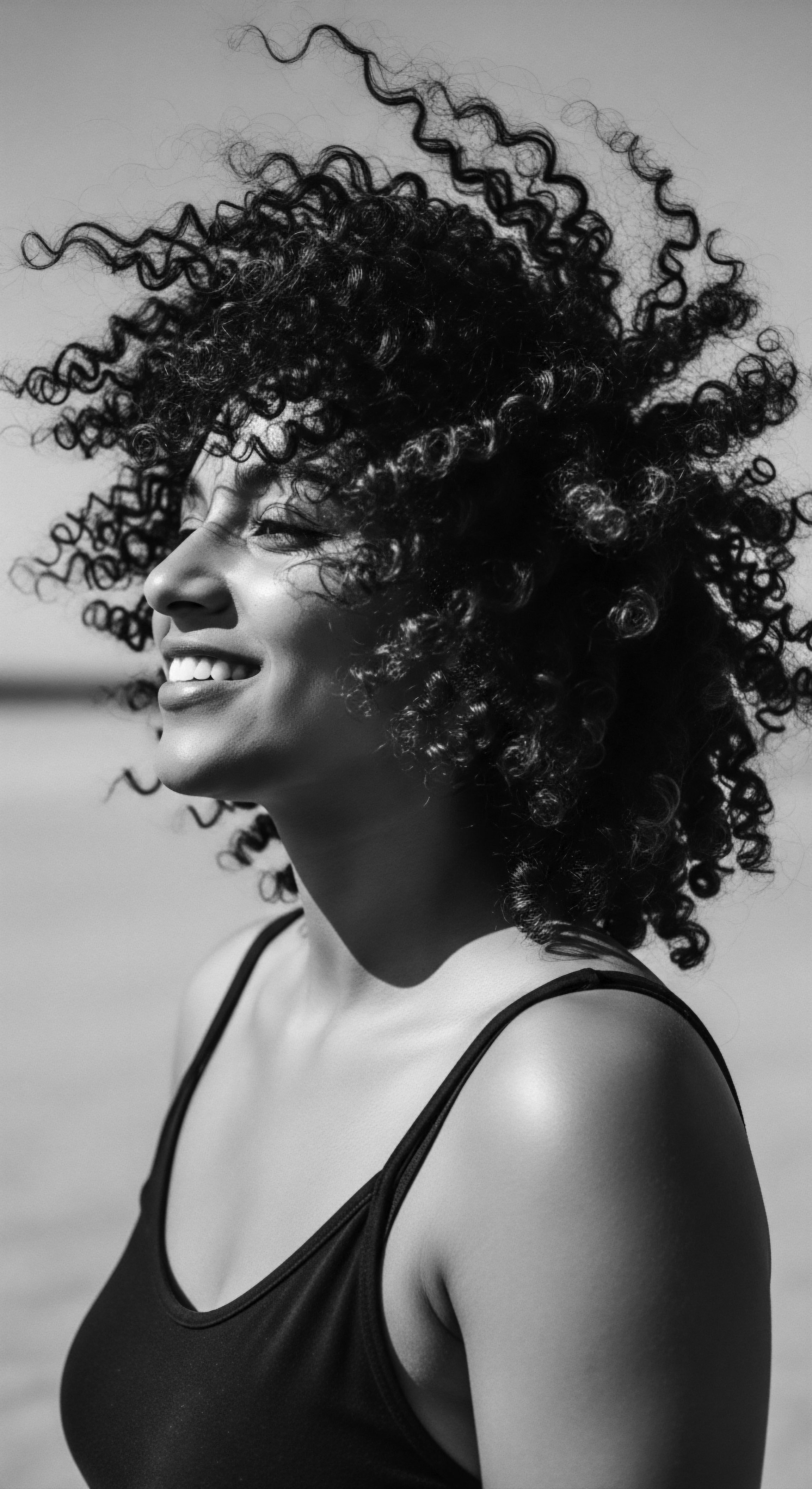
References
- Appell, P. F. A. (2007). Photoprotection of human hair. Journal of Cosmetic Dermatology, 6(1), 1–7.
- Markiewicz, E. & Idowu, O. C. (2024). Exploring the Use of Natural Ingredients for the Protection of Textured Hair from Ultraviolet Radiation ❉ An In Vitro Study. Cosmetics, 11(3), 102.
- van den Berg, G. J. E. J. M. (2009). Optical properties of hair. Eindhoven University of Technology.
- Bebrų Kosmetika. (2024, August 23). The Power of Hair in African Folklore ❉ Rituals and Traditions. Retrieved from Bebrų Kosmetika Blog.
- The Guardian Nigeria News. (2022, January 27). Otjize ❉ The Red Beauty Miracle Of The Himba People. Retrieved from The Guardian Nigeria News.
- Pure Love Artisan Sk. (2024, May 24). The Age-Old Beauty Rituals of the Himba Tribe. Retrieved from Pure Love Artisan Sk Blog.
- Forward Travel. Who is the Himba Tribe of Namibia? Retrieved from Forward Travel Blog.
- Booksy. (2021, February 3). Celebrating the History of Black Hairstyles in Honor of Black History Month. Retrieved from Booksy Blog.
- Okan Africa Blog. (2020, October 8). The significance of hair in African culture. Retrieved from Okan Africa Blog.
- Clinikally. (2024, June 3). Reviving Ancient Hair Rituals ❉ Exploring the Therapeutic Art of Hair-Oiling. Retrieved from Clinikally Blog.
- Wang, B. (1995). Hair Fiber Anatomy and its Optical Properties. The Journal of the Society of Cosmetic Chemists, 46(1), 1-10.
- Robbins, C. R. (2012). Chemical and Physical Behavior of Human Hair (5th ed.). Springer Science & Business Media.
- Marschner, S. R. Jensen, H. W. Cammarano, M. Worley, S. & Hanrahan, P. (2003). Light scattering from human hair fibers. ACM Transactions on Graphics (TOG), 22(3), 780-791.
